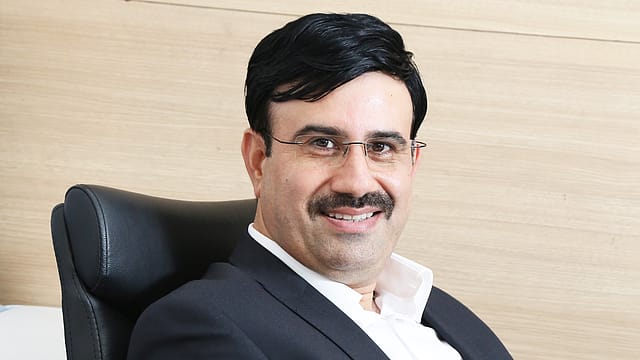No threat to feature phones in the next three to four years: Ziox Mobile CEO
ADVERTISEMENT

It’s 2018, and the idea of a feature phone is unthinkable for many. But in India, feature phones still dominate the market, especially the segment of the population that cannot afford smartphones, first-time mobile phone users, those who cannot read and write, or who use phones primarily for voice calls.
According to data from Counterpoint’s Market Monitor service, India’s overall mobile phone shipments grew 48% YoY in Q1 2018. The market research company says that the market was driven by the feature phone segment which doubled in Q1 2018 due to strong shipments of Reliance JioPhone, while the smartphone market remained flat.
Ziox Mobiles is one of the companies capitalising on the feature phone market in India. The company offers a wide range of feature phones, and entry-level smartphones. The four-year old company, which sold about 3.6 million phones in 2017-18, wants to capture a 5% market share, and wants to double its phone sales in the next three to four months.
Fortune India spoke to CEO Deepak Kabu. Edited excerpts:
How do you see the feature phone market in India?
There is a huge demand for feature phones in both rural as well as urban areas. People are still inclined towards feature phones, in fact there are smart phone users who keep feature phones as back up because smartphone batteries are so unreliable.
The market in India is such that there are still people who still use mono-monitors, the market for black and white monitors still exists. We have LCD and LED TVs but that does not mean old TVs are dead yet.
People, especially from the lower middle class, or first-time phone buyers, still want a phone that has a good battery life, and essential things like a torch. I don’t see any threat to feature phones at least for the next three to four years. You can tell by how much Reliance’s Jio phones are selling right now.
How are feature phones different now?
The look of the phones is changing, we try to experiment with colours and the look of the phone. Earlier, feature phones did not have features like auto-call recording etc, which they have now. Torch was not such a big thing, but it is now. The battery life is better. People are moving toward slim phones, and feature phones are slimmer as well.
January 2026
Netflix, which has been in India for a decade, has successfully struck a balance between high-class premium content and pricing that attracts a range of customers. Find out how the U.S. streaming giant evolved in India, plus an exclusive interview with CEO Ted Sarandos. Also read about the Best Investments for 2026, and how rising growth and easing inflation will come in handy for finance minister Nirmala Sitharaman as she prepares Budget 2026.
How do you plan to capture the 5% market share that you are targeting?
One is to be consistent and to give better quality in feature phones. We have to differentiate our phones in a competitive market. In terms of the smartphones, I think we have to give value to the people who are moving from feature phones to smartphones. Entry-level smartphones are what we are focussing on. People who are shifting to smartphones want to do it for features like videos and music.
The demand for smartphones between Rs 3,000 to Rs 5,000 is huge in the country. I feel that’s where our numbers can be increased. If I say I want to capture 5% of the market, I want to do it with entry-level smartphones and feature phones. If we have a good number of smartphones for that segment with aggressive pricing, I am pretty sure I will get the numbers I am looking for.
Secondly, we have deep penetration in the market, we are present till the taluka-level in many areas, we would like to increase that across India. The area coverage, deep-penetration with a good number of entry-level smartphones, and feature phones with good battery and features, will help us.
Is it difficult to make smartphones with all the modern features, and still be cost-effective?
It is not an easy job. You can play with the screen size, for instance if someone makes Rs 4,000 phone has a 5-inch screen size, we may have our phone with a smaller screen. For a person moving from a feature phone to a smart phone, the screen size does not bother him, the price does.
We can start with a 4-inch screen to make the smartphone cheaper. I don’t like to play with the memory, because once a person starts using a smartphone, the memory usage does go up. On WhatsApp itself you use a lot of memory. I believe at least 1GB memory is essential for an entry-level smartphone.
How do you differentiate your product?
The most important thing is the quality. If we offer good quality, we will get repeat orders. I don’t want to play with people’s money. It could be a richshaw-wallah who is buying our phone, I don’t want to play with his hard-earned money. Also, these people don’t have the time to take their phone to the service centre, so the quality of the product is essential.
Who do you identify as your consumer?
When I started I thought our market was going to be largely rural. But it isn’t so. For example, our Mumbai distributor is our number one distributor. Yes, there are people who will only buy Apple or Samsung, but there are people who cannot afford those, but they should have access to good quality phone as well. Middle class or lower middle class people are our main consumers.
